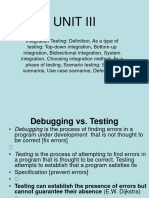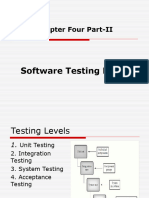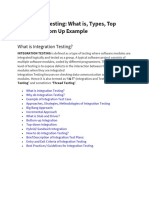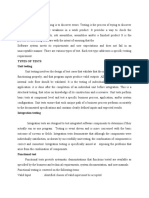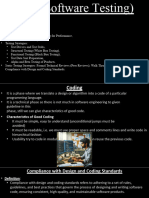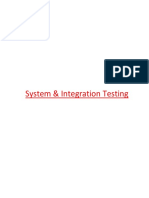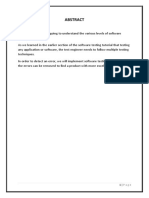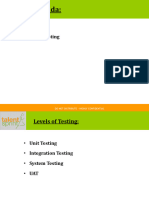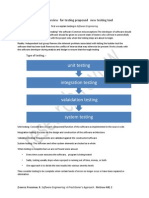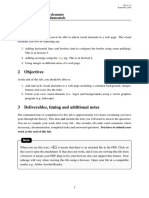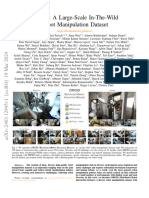0% found this document useful (0 votes)
8 views36 pagesManualTesting Part5
The document outlines the levels of software testing, including Unit Testing, Integration Testing, System Testing, and User Acceptance Testing, emphasizing their purpose in the Software Development Life Cycle (SDLC). It details the techniques, pros and cons, and best practices associated with Unit and Integration Testing, while also discussing System Testing types and the importance of User Acceptance Testing. Overall, it serves as a comprehensive guide for understanding and implementing effective testing strategies in software development.
Uploaded by
shaik738521Copyright
© © All Rights Reserved
We take content rights seriously. If you suspect this is your content, claim it here.
Available Formats
Download as PPTX, PDF, TXT or read online on Scribd
0% found this document useful (0 votes)
8 views36 pagesManualTesting Part5
The document outlines the levels of software testing, including Unit Testing, Integration Testing, System Testing, and User Acceptance Testing, emphasizing their purpose in the Software Development Life Cycle (SDLC). It details the techniques, pros and cons, and best practices associated with Unit and Integration Testing, while also discussing System Testing types and the importance of User Acceptance Testing. Overall, it serves as a comprehensive guide for understanding and implementing effective testing strategies in software development.
Uploaded by
shaik738521Copyright
© © All Rights Reserved
We take content rights seriously. If you suspect this is your content, claim it here.
Available Formats
Download as PPTX, PDF, TXT or read online on Scribd
/ 36
















